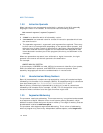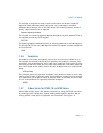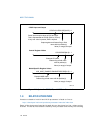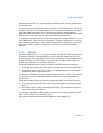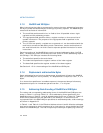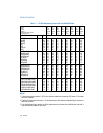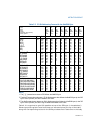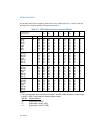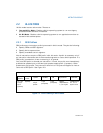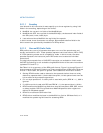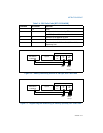
2-4 Vol. 2A
INSTRUCTION FORMAT
2.1.3 ModR/M and SIB Bytes
Many instructions that refer to an operand in memory have an addressing-form spec-
ifier byte (called the ModR/M byte) following the primary opcode. The ModR/M byte
contains three fields of information:
• The mod field combines with the r/m field to form 32 possible values: eight
registers and 24 addressing modes.
• The reg/opcode field specifies either a register number or three more bits of
opcode information. The purpose of the reg/opcode field is specified in the
primary opcode.
• The r/m field can specify a register as an operand or it can be combined with the
mod field to encode an addressing mode. Sometimes, certain combinations of
the mod field and the r/m field is used to express opcode information for some
instructions.
Certain encodings of the ModR/M byte require a second addressing byte (the SIB
byte). The base-plus-index and scale-plus-index forms of 32-bit addressing require
the SIB byte. The SIB byte includes the following fields:
• The scale field specifies the scale factor.
• The index field specifies the register number of the index register.
• The base field specifies the register number of the base register.
See Section 2.1.5 for the encodings of the ModR/M and SIB bytes.
2.1.4 Displacement and Immediate Bytes
Some addressing forms include a displacement immediately following the ModR/M
byte (or the SIB byte if one is present). If a displacement is required; it be 1, 2, or 4
bytes.
If an instruction specifies an immediate operand, the operand always follows any
displacement bytes. An immediate operand can be 1, 2 or 4 bytes.
2.1.5 Addressing-Mode Encoding of ModR/M and SIB Bytes
The values and corresponding addressing forms of the ModR/M and SIB bytes are
shown in Table 2-1 through Table 2-3: 16-bit addressing forms specified by the
ModR/M byte are in Table 2-1 and 32-bit addressing forms are in Table 2-2. Table 2-3
shows 32-bit addressing forms specified by the SIB byte. In cases where the
reg/opcode field in the ModR/M byte represents an extended opcode, valid encodings
are shown in Appendix B.
In Table 2-1 and Table 2-2, the Effective Address column lists 32 effective addresses
that can be assigned to the first operand of an instruction by using the Mod and R/M
fields of the ModR/M byte. The first 24 options provide ways of specifying a memory



